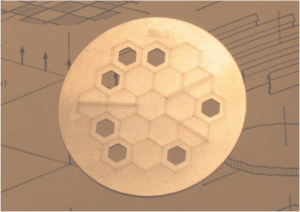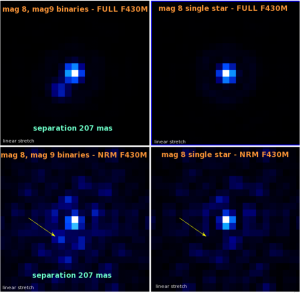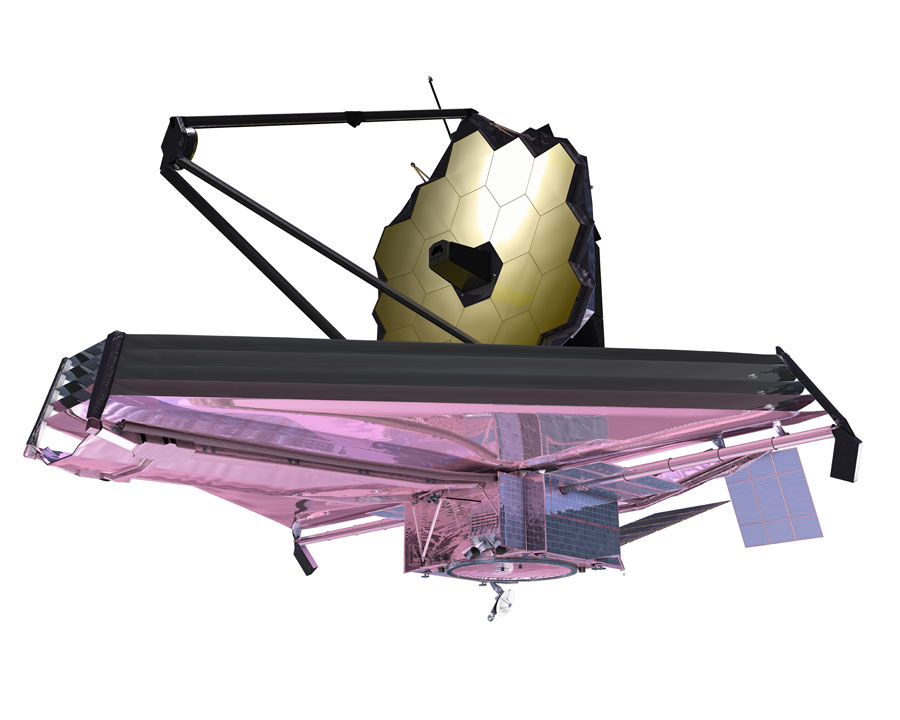NIRISS
The Near Infrared Imager and Slitless Spectrograph supports four observing modes: SOSS, AMI, WFSS and Imaging.
- SOSS – Single Object Slit-Less Spectroscopy
- WFSS – Wide Field Silt-Less Spectroscopy
- AMI – Aperture Masking Interferometry
- Imaging – Imaging for parallel observations with another JWST instrument – not yet supported
| Observing Mode | Use Case | Pupil Wheel | Filter Wheel | Spectral Range | Resolving Power | Characteristics |
|---|---|---|---|---|---|---|
| SOSS | Time Series Observations (Exoplanet Transit Spectroscopy) | GR700XD | CLEAR (Slitless) | 1st Order: 0.85-2.80 um 2nd Order: 0.60-1.40 um | 1st Order: 650 @ 1.25 um | Saturation Limiting Magnitudes: SUBSTRIP96: J>6.3 SUBSTRIP256: J>8.1 FULLFRAME: J>8.9 |
| AMI | High Angular Resolution Imaging | NRM - 7 holes | F277W, F380M, F430M or F480M | - | - | Contrasts <8-9 mag between 0.1'' and 0.4'' |
| WFSS | Low Resolving Power Slitless Spectroscopy | GR150C or GR150R | F090W, F115W, F140M, F150W, F158M or F200W | Set by blocking filter (0.8-2.2 um) | 1st Order: 140 @ 1.3 um | Two grisms oriented at 90 degrees to mitigate contamination |
| Imaging | Currently only supported as part of the WFSS direct image observations. | F090W, F115W, F140M, F150W, F158M, F200W or CLEARP | F277W, F356W, F380M, F430M, F444W, F480M or CLEAR | - | - | FOV: 2.2' x 2.2' Pixel Scale: 65 mas |
The SOSS mode was designed to enable 0.6-2.8 microns low resolving power (R=700) exoplanet transit spectroscopy. The slit-less spectrograph uses a cross-dispersed grism in first and second orders, a weak cylindrical lens to defocus the trace to 23 pixels in the spatial direction and detector subarrays to target bright objects (6.3<J<12).

The WFSS mode was designed to obtain low-resolving power (R=150) slit-less spectra of a large amount of targets simultaneously within the 2.2’x2.2′ field of view of NIRISS. There is a choice between two grisms producing spectra at orthogonal angles to each other to mitigate contamination in crowded fields. Blocking filters determine the wavelength coverage (0.8-2.2 microns).
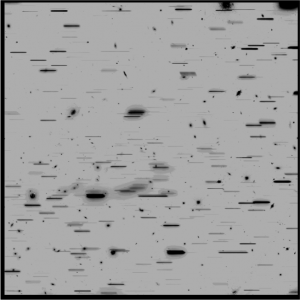
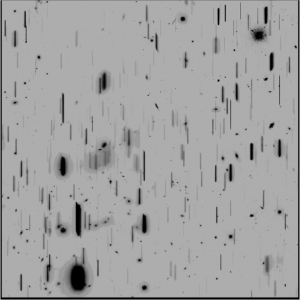
AMI is a high angular resolution imaging mode making use of a non-redundant mask (7 holes in the pupil) to produce interferograms. This mode allows to peer to inner working angles smaller (0.1″ – 0.4″) than other types of imaging with JWST, albeit at shallower contrasts of 8-9 magnitudes near 4 microns.
